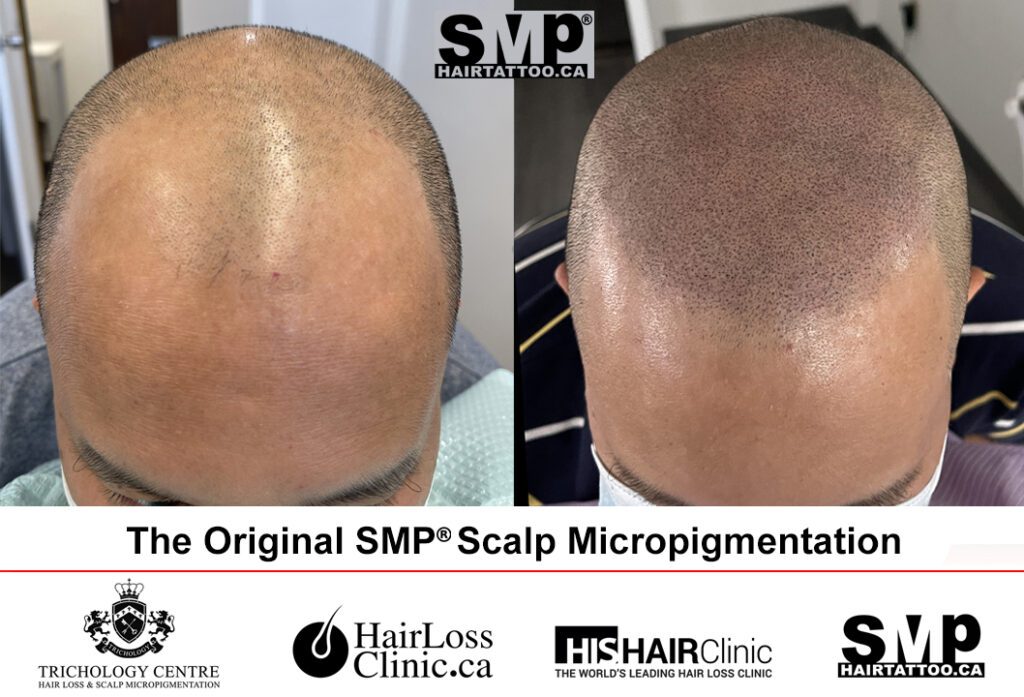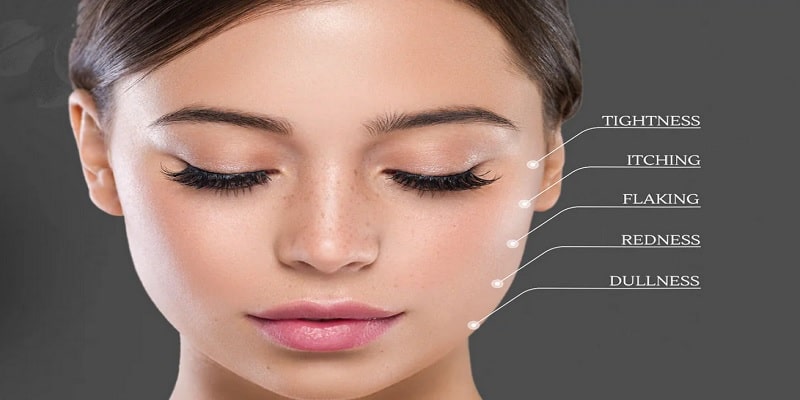Bald spots or thinning hair can be covered without surgery using scalp micropigmentation, often known as a hair tattoo. Little pigment (colour) dots are applied to the scalp by practitioners using delicate needles. This technique can conceal bald areas or provide the appearance of a shaven head.
What does scalp micropigmentation entail?
A cosmetic procedure for hair thinning or hair loss is scalp micropigmentation. A hair tattoo is another name for it. A professional paints the scalp with tiny bits of colour using delicate, small needles. The hair is thicker because of these spots. Permanent inks of cosmetic grade are used for scalp micropigmentation.
Scalp micropigmentation can cover thinning parts of your scalp when done by a qualified specialist. Scars or birthmarks may also be concealed by it. When applied to bald individuals, the procedure can also provide the appearance of buzz cuts or shaved heads. Scalp micropigmentation is a non-invasive procedure involving no cutting or general anesthesia.
For whom is scalp micropigmentation intended?
Micropigmentation on the scalp is a type of micropigmentation (permanent makeup). The treatment can make people’s hair appear thicker if they have the following:
Alopecia areata is described as an autoimmune disorder that causes hair loss.
Chemotherapy-induced hair loss.
Hair loss in women.
Hormonal conditions that cause hair loss, such as polycystic ovary syndrome (PCOS).
Male pattern baldness, receding hairline, or crown baldness.
Thin hair or a bare scalp.
Scars or birthmarks on the scalp.
Does scalp micropigmentation cause hair growth?
Scalp micropigmentation does not promote hair growth or alter natural hair growth. It is not a hair loss treatment. It will also not cause hair loss or damage your existing hair follicles. Scalp micropigmentation can make your hair appear fuller and thicker.
What takes place before scalp micropigmentation?
Before scalp micropigmentation:
Before your session, wash your hair and scalp.
Your doctor marks the scalp’s treatment regions when you arrive.
If you are bald, you and your provider might design a hairline based on your facial features, age, and head shape.
You and your provider select pigments that match the colour of your hair.
Your doctor applies numbing medication to your scalp to make you more comfortable for the treatment. Scalp micropigmentation is typically less painful than getting a tattoo since the needles are smaller and thinner than tattoo needles.
What takes place during scalp micropigmentation?
A medical-grade pigment is applied with a needle to the desired scalp locations by your practitioner. The dots are different in size, angle, and depth to give a natural, hair-like appearance.
Your treatment may range from a few hours to up to three, and typically multiple sessions are necessary to achieve the desired results. Additional colour is added during each treatment to give the appearance of thick hair.
Read more about: 15 Things You Need To Know About Men’s Health
After scalp micropigmentation, what happens?
You can quickly return to your routine because no surgery or anesthetic is required. Scalp micropigmentation has extremely few adverse effects. However, your scalp may experience some temporary redness for a few hours. If you want, you can cover your scalp with a hat or scarf.
What benefits can scalp micropigmentation offer?
When compared to hair transplant surgery, scalp micropigmentation has the following advantages:
Less invasive (no surgery or incisions).
Reduced pain, lower price.
zero downtime
What are the possible side effects or risks of this procedure?
Using an unlicensed or untrained practitioner who does not take the appropriate safeguards carries the most dangers while having scalp micropigmentation done.
Potential dangers include:
Response due to an allergy to cosmetic pigments.
Infection brought on by dirty needles.
Unattractive or unnatural appearance following therapy.
To reduce these risks:
Choose a certified scalp micropigmentation specialist.
Request to see examples of their prior and subsequent scalp micropigmentation procedures.
Before the operation, talk to the technician about any allergies.
Does anyone have to avoid scalp micropigmentation?
Scalp micropigmentation is not recommended for people prone to keloids (scars that enlarge abnormally). Some patients may develop keloids as a result of the treatment.
How long does recovery take after scalp micropigmentation?
For a few days following the procedure, you should refrain from the following: getting your scalp wet. Wear a shower hat to keep your head dry while showering or taking a bath. Wait until your healthcare practitioner gives the all-clear to shampoo your hair or scalp.
vigorous exercise
steam rooms or hot, steamy showers. Your scalp may become moistened as a result of the steam.
Having sunburns on your scalp
being perspired upon or in a warm setting.
How long does micropigmentation on the scalp last?
Scalp micropigmentation typically lasts four years or longer before losing its appearance. Permanent cosmetic pigments are utilized in scalp micropigmentation. They resist fading and colour change since they are not the same as tattoo ink.
When should I schedule a visit with my doctor?
If you experience suspected infection symptoms following scalp micropigmentation, such as fever, dial your doctor’s number immediately.
Drainage or pus.
Extreme pain.
Extreme redness.
Swelling.







